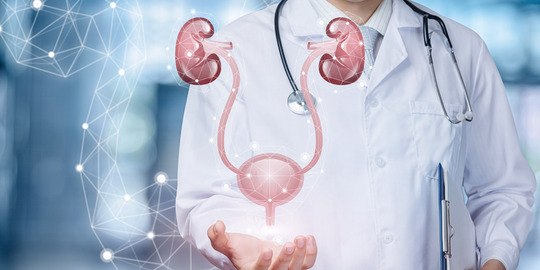Urological health often doesn’t get the attention it deserves—until something goes wrong. Whether it’s a persistent urinary issue or unexplained pain in the lower abdomen, many people delay seeking help, often out of embarrassment or a lack of awareness. But recognizing the early signs of urological disorders can make a big difference in diagnosis, treatment, and long-term health outcomes.
In this post, we’ll explore what urological disorders are, the early warning signs to watch out for, and when it’s time to consult a urologist.
What is Urology?
Urology is a branch of medicine that focuses on diseases of the male and female urinary tract (kidneys, ureters, bladder, and urethra) and the male reproductive organs (prostate, testes, penis). Urologists treat a wide range of conditions, from kidney stones and urinary infections to more serious issues like bladder or prostate cancer.
Urological problems can affect people of all ages and genders, and many are more common than you might think.
Common Urological Disorders
Here are some of the most frequently encountered urological conditions:
- Urinary Tract Infections (UTIs): Common in both men and women but especially prevalent among women.
- Kidney Stones: Crystallized minerals that cause severe pain as they pass through the urinary tract.
- Benign Prostatic Hyperplasia (BPH): Non-cancerous enlargement of the prostate, common in older men.
- Incontinence: Involuntary loss of bladder control.
- Prostate Cancer: One of the most common cancers among men.
- Interstitial Cystitis: A chronic condition causing bladder pressure and pain.
- Erectile Dysfunction (ED): Often tied to underlying urological or cardiovascular conditions.
Early Warning Signs You Shouldn’t Ignore
Early detection is key. Many urological disorders begin with mild symptoms that can be mistaken for less serious issues. Here are some signs that may indicate a developing urological problem:
1. Frequent Urination
If you find yourself needing to urinate more often than usual—especially at night—it could be a sign of an overactive bladder, urinary tract infection, or prostate issues.
2. Pain or Burning Sensation While Urinating
This is a classic sign of a urinary tract infection, but it could also indicate bladder inflammation or even certain sexually transmitted infections (STIs).
3. Blood in Urine (Hematuria)
Even if it happens just once, visible blood in the urine should never be ignored. It could be a sign of kidney stones, infection, or in more serious cases, bladder or kidney cancer.
4. Lower Back or Side Pain
Persistent pain in the lower back or side may be related to kidney stones or infection. This pain is often sharp and may radiate toward the groin.
5. Difficulty Urinating or Weak Urine Flow
If it takes longer than usual to start urinating, or the stream is weak, it could be a sign of BPH or even prostate cancer.
6. Incontinence or Leaking
Loss of bladder control—whether occasional leaking or full incontinence—can be caused by weakened pelvic muscles, nerve damage, or prostate problems.
7. Erectile Dysfunction
Though often thought of as a sexual health issue, ED can sometimes signal underlying urological or vascular conditions.
8. Pelvic Pain or Pressure
Chronic discomfort or a sense of fullness in the lower abdomen may be a sign of bladder issues or prostate inflammation.
When Should You See a Urologist?
If you’re experiencing any of the symptoms above, especially if they persist for more than a few days, it’s time to consult a urologist. Early evaluation can help prevent complications and make treatment easier and more effective.
You should see a urologist if:
- Symptoms last more than a few days.
- You have recurrent urinary tract infections.
- You’re over 50 and experiencing urinary changes.
- There’s blood in your urine.
- You have difficulty urinating or emptying your bladder completely.
- You experience ongoing pain in the pelvic or lower back area.
- Erectile dysfunction is affecting your quality of life.
What to Expect During a Urology Visit
A visit to a urologist typically begins with a thorough review of your medical history and current symptoms. Diagnostic tests may include:
- Urinalysis
- Blood tests
- Ultrasound or CT scans
- Uroflowmetry (measuring urine flow)
- Cystoscopy (a camera examination of the bladder and urethra)
Treatment options vary depending on the condition but may include medications, lifestyle changes, minimally invasive procedures, or surgery.
Why Early Intervention Matters
The earlier a urological disorder is diagnosed, the better the chances for successful treatment and recovery. Conditions like prostate cancer and kidney stones are far easier to manage when caught early. Ignoring symptoms or self-medicating can delay diagnosis and make problems worse over time.
Early detection not only improves outcomes—it can also save lives.
Conclusion
Urological health is an essential but often overlooked part of overall well-being. Many of the early signs of urological disorders are easy to miss or dismiss. But paying attention to your body and seeking medical help promptly can prevent minor issues from becoming major problems.
If you’re experiencing persistent urinary symptoms, pelvic discomfort, or changes in sexual health, don’t ignore the signs. Early diagnosis can make all the difference. At Shree Srinivasa Uro Care, a leading Urology Hospital in Bangalore, our experienced urologists provide compassionate, expert care using the latest technology. Whether it’s urinary tract issues, prostate concerns, or kidney stones, we’re here to help you regain comfort and confidence. Schedule your consultation today and take the first step toward better urological health—because your health and peace of mind matter.





Comments